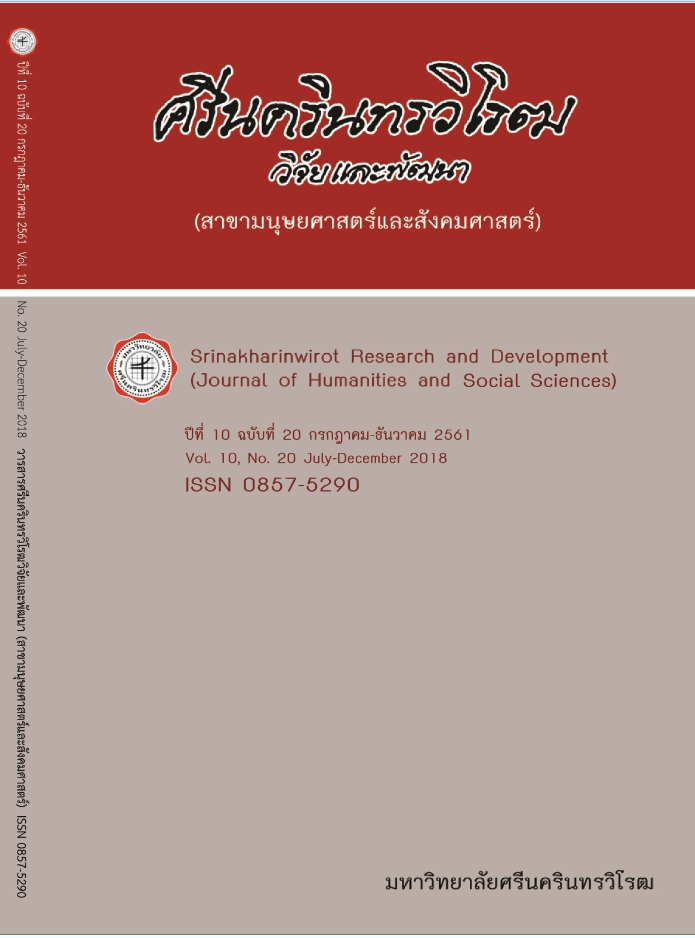ปัจจัยทางวัฒนธรรมที่มีผลกับความหมายของว่านในระบบสุขภาพไทย CULTURAL FACTORS ON MEDICINAL MEANING OF WAAN IN HEALTHCARE SYSTEM
Keywords:
Waan, Drug, Thai Healthcare System, Thai Public HealthAbstract
Among Thai people, Waan was generally perceived as a herb with special properties, Unlike a typical herbs. Ethnobotany, a Cultural identity, in Thailand is generally understood in two ways, plants for a medicinal treatment or plants with supernaturality like a Iron-skined or charismatics being. but the official meaning is that there are no clearly defined. Whether in Waan’s textbooks itself or in the dictionary.
This research is aimed to explore the meaning and transformation of Waan and Drug by mean of documentary research by Waan’s textbook as the key tracer. Genealogy using the contemporary documents was used to be a main methodology, including the political, economic, public health, and the medical textbooks. The results from this work will help to explain the society by Waan as a centre. furthermore the final result could even made the etymology of the words, Waan and drug, become explicitly too.
The study documents from both the content and the tradition of writing such textbooks. It can be concluded that it is a plant with medicinal properties. But the meaning of the drug in the past covered the profundity of what used to negotiate everyday threats such Disease-Scare-Fever-Pain that did not mean the only curling like a currently does. The medicinal properties of Waan, even though, is more than other plants, but not enough to be fit to the modern pharmaceutical regime from the western that inroaded to Kingdom of Thailand
Downloads
References
[2] ราชบัณฑิตยสถาน. (2525). พจนานุกรม ฉบับราชบัณฑิตยสถาน. กรุงเทพฯ: ราชบัณฑิตสถาน.
[3] ราชบัณฑิตยสถาน. (2542). พจนานุกรม ฉบับราชบัณฑิตยสถาน. กรุงเทพฯ: ราชบัณฑิตสถาน.
[4] ราชบัณฑิตยสถาน. (2554). พจนานุกรม ฉบับราชบัณฑิตยสถาน. กรุงเทพฯ: ราชบัณฑิตสถาน.
[5] เลื่อน กัณหะกาญจนะ. (2506). ตำราว่านกับคุณลักษณะ ของสมาคมพฤกษชาติแห่งประเทศไทย ในพระบรมราชูปถัมภ์. กรุงเทพฯ: แพร่พิทยา.
[6] โอภาส ขอบเขตต์. (2525). คู่มือดูว่าน. กรุงเทพฯ: สมาคมว่านแห่งประเทศไทย.
[7] สำนักคุ้มครองภูมิปัญญาการแพทย์แผนไทย. (2555). คัมภีร์ธาตุพระนารายณ์ ฉบับใบลาน (ตำราพระโอสถพระนารายณ์). กรุงเทพฯ: สำนักคุ้มครองภูมิปัญญาการแพทย์แผนไทย กรมพัฒนาการแพทย์แผนไทยและแพทย์ทางเลือก กระทรวงสาธารณสุข.
[8] อุตะมะ สิริจิตโต. (2505). ตำราปลูกและดูลักษณะว่าน. ม.ป.พ.
[9] Maslow, A. H. (1943). A Theory of Human Motivation. Psychological Review. 50: 370-396.
[10] Woodward, Ian. (2007). Understanding Material Culture. London: Sage.
Downloads
Published
How to Cite
Issue
Section
License
Srinakharinwirot Research and Development Journal of Humanities and Social Sciences is licensed Under a Creative Commons Attribution-NonCommercial-NoDerivs 4.0 International (CC-BY-NC-ND 4.0) License, Unless Otherwise Stated. Please Read Journal Policies Page for More Information on Open Access, Copyright and Permissions.



